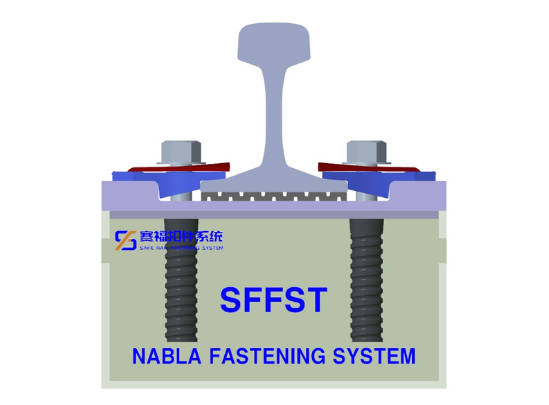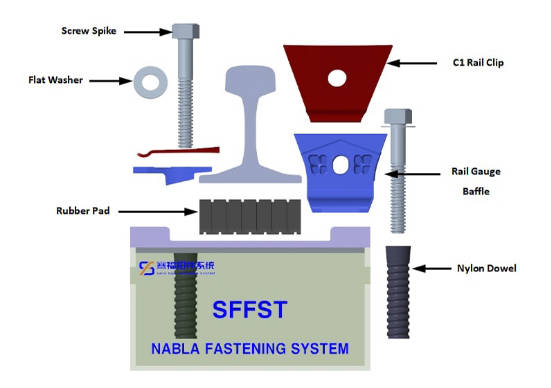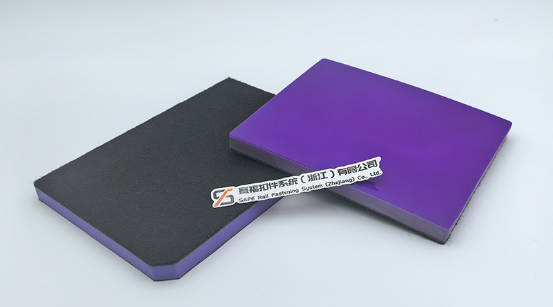
What is a Railway Fastening System?
A rail fastening system is a critical element of modern track infrastructure. It connects the rail to the sleeper or baseplate and ensures the rail is at the correct gauge, alignment, and general stability. The systems convey the dynamic loads of the passing trains, dissipate vibration, and minimize rail movement. Without reliable fastening systems, railways would be subject to the risk of misalignment, premature wear, and even derailment.
About SFFST–Leading the Field in Rail Fastening Technology
SFFST is a world leader in high-performance railway fastening systems dedicated to innovation, quality, and reliability over the long term. With cutting-edge manufacturing technology and strict quality controls in accordance with European norms, SFFST supplies fastening systems that work in the most extreme operating conditions—high-speed passenger lines through heavy-haul freight lines. Our goal is simple: creating fastening systems that are safe, durable, and efficient for railway companies around the world.
Get acquainted with the NABLA C1 Fastening System
The NABLA C1 Fastening System is among SFFST’s premium solutions, developed to address the needs of contemporary railway infrastructure. It accommodates I-section rails and is fully compliant with EN 13481-2, Category C, adhering to international quality standards for performance and reliability. The NABLA C1 system is constructed using precision-engineered parts that deliver superior performance in terms of load resistance, vibration damping, and long-term stability, making it suitable for both new rail corridors and track renewal schemes.

Key Components and Their Function
1. Rail Pad
The rail pad is a cushion between the sleeper and rail. Made of hard rubber (Shore A≥65), it reduces vibration and noise, and offers high electrical resistance (≥10⁸ Ω). It protects the rail and substructure from wear and offers a smoother and quieter ride for the train.
2. Nabla Clip
At the heart of the system is the Nabla clip, fabricated from hot-rolled spring steel (60Si2Mn). The clip holds the rail firmly but allows flexibility for thermal expansion. The clips are all fabricated for high fatigue life—tested up to 200 million load cycles with a hardness level at 41–46.5 HRC.
3. Insulators and Dowels
Nylon insulators and dowels prevent stray electrical currents from entering metal components and can be utilized in preventing corrosion. They have excellent hardness (≥105 HRR) that gives dimensional stability and effective vibration isolation between the sleeper and rail.
4. Screw Spikes and Anchors
The system uses lubricated screw spikes (Grade 4.6 or 4.8) that offer easy installation and removal with hand tools. They secure the fastening assembly firmly into the sleeper with uniform clamping pressure irrespective of load.

Technical Highlights of NABLA C1
| Feature | Specification |
|---|---|
| Execution standard | EN 13481-2 (Category C) |
| Clip fatigue life | 200 million cycles |
| Hardness (clip) | 41–46.5 HRC |
| Rubber pad stiffness | Customized by line type |
| Electrical resistance | ≥ 10⁸ Ω |
| Axle load capacity | Up to 26 tons |
| Environmental resistance | Tested per EN ISO 9227 (300 h salt spray) |
These specifications make NABLA C1 one of the most reliable fastening systems available for high-performance railway applications.
Why NABLA C1 Steers Ahead
Superior Vibration and Noise Attenuation
The elastic components of the system have been put through tests as per EN 13146-9:2009 and efficiently damp vibration as well as attenuate noise. This makes NABLA C1 an answer for city transit and metro systems, where control of noise and passenger comfort are crucial.
Durability under Harsh Heavy Loads
The system’s optimized geometry and wear-resistant materials ensure robust performance in extreme axle loads of 26 tons. It has already survived harsh conditions in places such as the Fenghong Railway Project.
Performance Throughout Environments
In the desert with hot temperatures or coastal areas with high humidity, stability and mechanical strength are maintained by the NABLA C1 system. Its anti-corrosion materials ensure stable performance throughout a wide range of weather conditions.
SFFST’s Quality Commitment
SFFST fastening systems are tested comprehensively as per BS EN 13146-6:2012 and BS EN 13146-8:2012. Every batch is mechanically tested for strength, fatigue life, and environmental resistance. Our production processes comply with EN ISO 9227 corrosion-resistance levels to ensure that the system withstands more than 300 hours of salt-spray exposure. These tests assure that SFFST’s fastening products match, if not exceed, international railway standards.
Global Applications of NABLA C1
High-Speed Railways
Projects such as the Wuhan–Guangzhou High-Speed Railway demonstrate how NABLA C1 provides stability and security at speeds of over 300 km/h. Its elasticity ensures track geometry accuracy against repeated dynamic loads.
Urban Transit Systems
In heavily populated urban cities like Chengdu Metro Line, the simple installation and low-maintenance system design reduces downtime while passenger comfort is ensured through effective vibration control.
Freight and Heavy-Haul Lines
For freight corridors such as the Morocco Kenitra–Marrakech High-Speed and Cargo Corridor, NABLA C1’s capacity for loading and corrosion resistance are its most highly valued aspects in providing long-term infrastructure reliability.
Engineering Excellence and Continuous Innovation
SFFST’s engineering division keeps developing innovative fastening designs with analysis and site trials. SFFST collaborates closely with railway authorities, infrastructure developers, and maintenance companies to ensure maximum performance for evolving transportation needs. Our innovative spirit doesn’t stop with hardware—SFFST integrates precision manufacturing, automated inspection technologies, and eco-friendly manufacturing processes to ensure sustainability and consistency in every delivery.
Conclusion: Building Safer, Smarter Railways with SFFST
NABLA C1 Fastening System is the best combination of mechanical strength, elastic performance, and engineering accuracy. While rail networks expand and improve globally, SFFST continues to provide fastening solutions for enhanced safety, reduced maintenance, and longer railway infrastructure life.
Require safe rail fastening solutions? Contact SFFST today to learn more about the NABLA C1 Fastening System or purchase in-depth product specifications for your future railway project.
FAQ
Q: Where is the NABLA C1 Fastening System used?
A: The NABLA C1 Fastening System is designed to secure the rails on sleepers in rail tracks and stabilize, reduce vibration, and possess precise alignment during heavy-load and high-speed transportation.
Q: How does the NABLA C1 system reduce noise and vibration on railroads?
A: The steel clips and rubber pads of the system successfully dampen dynamic forces, thus reducing vibration and noise during train passage. This makes it acceptable for urban rail and high-speed rail, where passenger comfort is essential.
Q: Which standard does the NABLA C1 Fastening System comply with?
A: It complies with global railway standards like EN 13481-2 (Category C), EN 13146-6:2012, and EN ISO 9227 in terms of corrosion resistance, guaranteeing safe and dependable performance across different environments.
Q: Where is the NABLA C1 system being utilized today?
A: The NABLA C1 system is used worldwide in large-scale railway projects like Wuhan–Guangzhou High-Speed Railway, Chengdu Metro, and Morocco’s Kenitra–Marrakech Corridor, demonstrating its reliability for passenger as well as freight transport.
Q: Why employ SFFST for railway fastening systems?
A: SFFST combines decades of engineering expertise with accurate manufacture and extreme quality control. Our railway fastening systems are durable, low-maintenance, and built to last in the most demanding railway environments.




